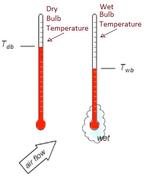Climatic Chambers for Environmental Testing
Advertisement
This page provides an overview of Climatic Chambers, also known as environmental chambers. It covers the fundamentals and highlights features of Climatic Chambers manufactured by CM Envirosystems Pvt. Ltd., and lists other vendors in the market. It also mentions benefits of climatic chamber.
What is a Climatic Chamber?
Definition: A climatic chamber is essentially an enclosed space designed to simulate various environmental conditions. The purpose is to test the performance and reliability of electronic products or components under these controlled conditions.
Also referred to as an environmental chamber, it allows users to define and create specific environments, manipulating factors such as:
- Temperature
- Humidity
- Altitude
- Electromagnetic Radiation
- Rain
- Vacuum
- Salt Spray … and more
Features of Climatic Chamber from CME
The following image illustrates a typical climatic chamber.

CM Envirosystems Pvt Ltd. offers the PAC series of Climatic chambers. These chambers are well-suited for testing RF, wireless, and general electronic products/equipment under various simulated environmental conditions. Key features include:
- Temperature Range: Models available support a wide range from -70°C to +180°C.
- Humidity Range: Capable of simulating humidity levels from 10% RH to 98% RH.
- Cyclic Testing: Ideal for cyclic low and high temperature, as well as humidity tests.
- Compliance: Designed to meet testing requirements based on international standards like ASTM, MIL, IEC, ISO, DIN, JIS, etc.
Climatic Chamber Vendors
The following table lists some of the prominent vendors of climatic chambers:
- Environmental & Technical Services Ltd. UK
- ETS Lindgren
- Thermotron Inc.
- Memmert GmbH
- Weiss Technik, UK
Benefits of Climatic Chamber
Following are some of the advantages of climatic chamber.
- Climatic chambers replicate real world environmental conditions, including extreme temperatures, humidity and rapid climate changes, ensuring reliable product testing.
- By subjecting products to harsh conditions, these chambers help identify potential weaknesses, improving their longevity and performance.
- Supports Compliance with Industry Standards like ISO, IEC and MIL-STD.
- Engineers and scientists use climatic chambers to test new materials and designs under controlled conditions, accelerating innovation and product optimization.
- Early detection of design flaws and material weaknesses minimizes product failures, reducing maintenance costs and warranty claims.
- Ensures consistency in product quality by testing batches under identical environmental conditions, leading to fewer defects.
- Supports Testing Across Multiple Industries including electronics, automotive, pharmaceutical, aerospace and food industries to test components, packaging, and final products for environmental resilience.
- Advanced climatic chambers allow programmable settings for different test cycles, including extreme heat, freezing cold and humidity variations.
Conclusion
Climatic chambers play a crucial role in testing and validating the durability, reliability and compliance of products across various industries. By simulating real world environmental conditions, they help manufacturers enhance product quality, reduce failure rates and meet industry standards. As technology advances, these chambers continue to evolve, offering more precise and efficient testing solutions for modern product development and research.
Advertisement
 T&M
T&M 


